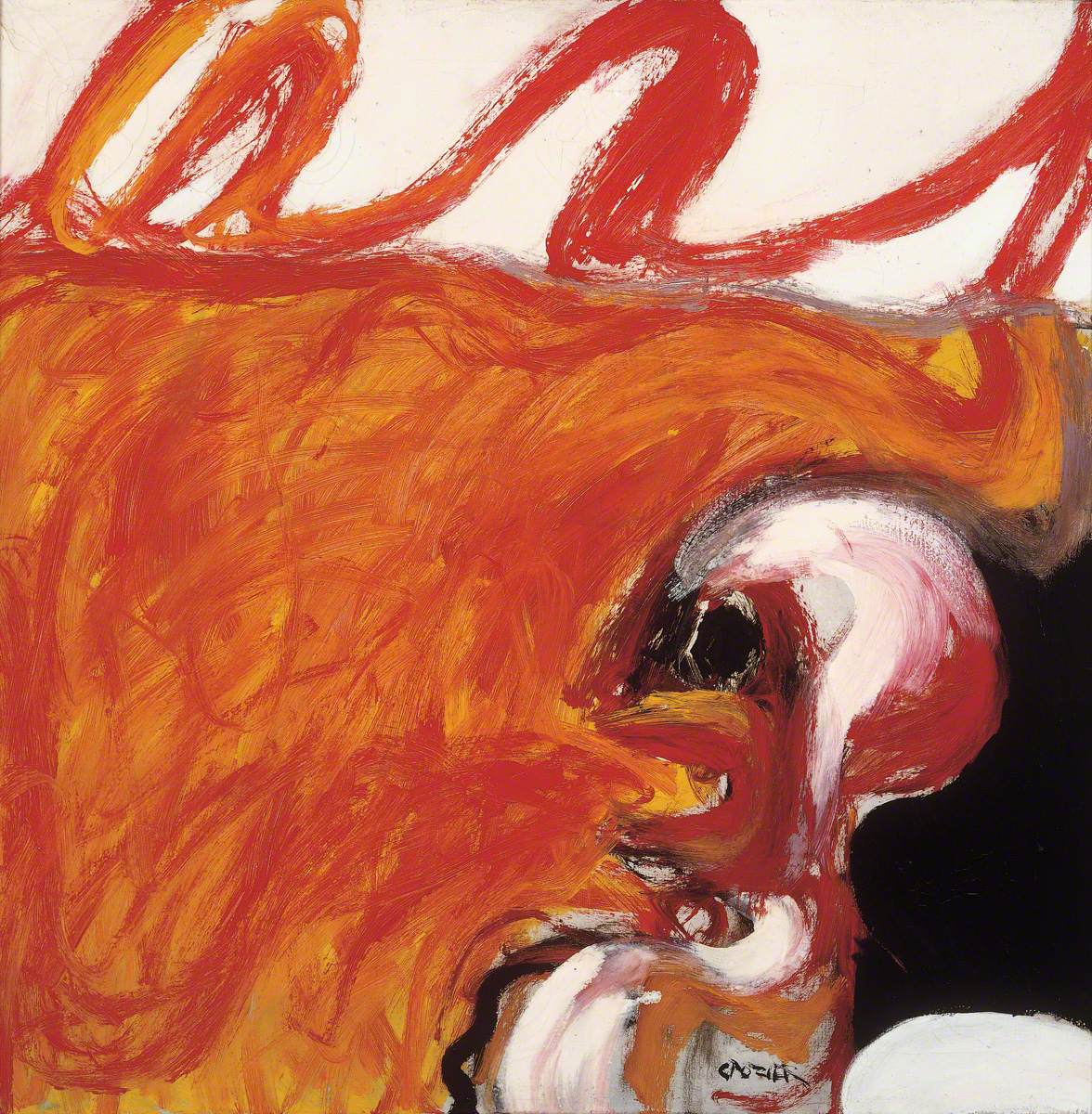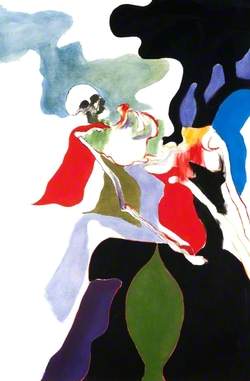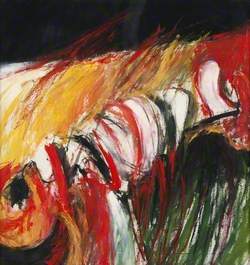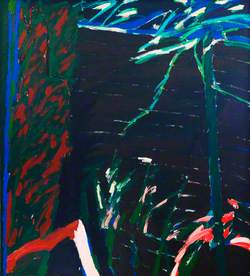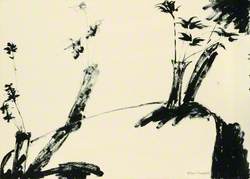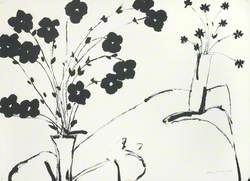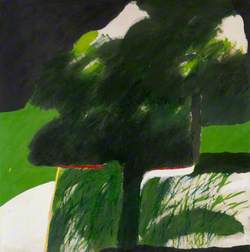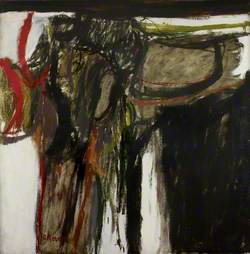How you can use this image
This image is available to be shared and re-used under the terms of the Creative Commons Attribution-NonCommercial licence (CC BY-NC).
This image can be reproduced in any way apart from any commercial uses.
Wherever you reproduce the image or an altered version of it, you must attribute the original creators (acknowledge the original artist(s), the person/organisation that took the photograph of the work) and any other stated rights holders.
Review our guidance pages which explain how you can reuse images, how to credit an image and how to find more images in the public domain or with a Creative Commons licence available.
DownloadNotes
Add or edit a note on this artwork that only you can see. You can find notes again by going to the ‘Notes’ section of your account.
In 1970, the artist wrote: 'I would like an art that is a razor slash.' The gaunt skeletal subjects of Crozier’s paintings are worked to an irreducible essence, becoming universal symbolic figures. This early 1960s self portrait is indeed an existentialist self-portrayal, representing perhaps a flayed 'everyman' figure. The self portrait is both reminiscent of European traditions like medieval memento mori pictures and the traumatising, atmospheric modern. Crozier stated ‘The image of man in the twentieth century will not be the cinema stars or the pop idols, but the victims of Belsen.’ The eye, a deep black void, contemplates while the ‘skeleton’ cries out against a blood-soaked landscape. The picture’s visceral immediacy is inseparable from contemporary philosophy.
By the 1980s, Crozier was making vibrant landscapes, with historical and metaphysical resonance, in which distinctions between abstract and figurative seem to evaporate.
Title
Self Portrait
Date
1961
Medium
oil on canvas
Measurements
H 76.5 x W 76.5 cm
Accession number
PCF20
Acquisition method
acquired by Ruth Borchard as part of the original collection
Work type
Painting
